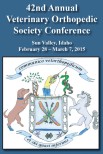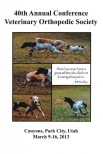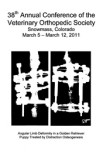OBJECTIVE: To evaluate the influence of epidemiologic, surgical, and mechanical factors on the durations of bone consolidation and external fixation after distraction osteogenesis in dogs.
STUDY DESIGN: Retrospective cohort study.
SAMPLE POPULATION: Dogs (n = 115) that had corrective osteotomy with circular external fixation (CEF; n = 152) METHODS: Medical and radiographic records (1992-2012) of dogs that had corrective osteotomies were reviewed. Putative variables included age, weight, gender, and breed. Surgery date, delay before distraction, rate and duration of distraction, mechanical complications, and frame removal date were recorded. Radiographic data included bone operated, bone length, osteotomy site, bone and limb size at osteotomy site, distraction distance, and CEF frame size and stiffness.
RESULTS: Mean ± SD bone consolidation period was 56 ± 33 days. Mean duration of external fixation was 77 ± 35 days. Twelve fixation failures occurred. Radii healed faster than tibiae (P < .001). Failure of fixation (P = .002) and stiff frames (P = .033) increased duration of bone consolidation. For the tibia, durations of bone consolidation and external fixation decreased with larger bone size relative to limb size (P = .004). For the radius, bone consolidation duration decreased as distraction amount increased (P = .03).
CONCLUSION: Radii healed faster than tibiae. Wearing frames with low or moderate stiffness, the absence of mechanical complications, a larger distraction distance, and a larger bone size accelerated bone consolidation. Optimizing these factors should accelerate bone consolidation and reduce the duration of external fixation.









